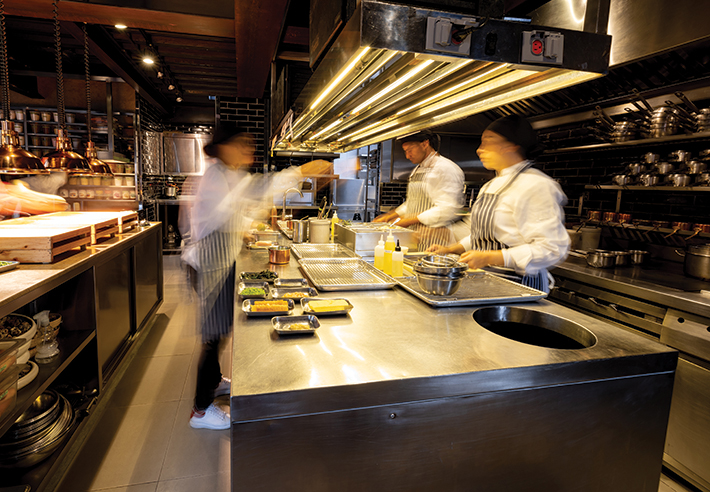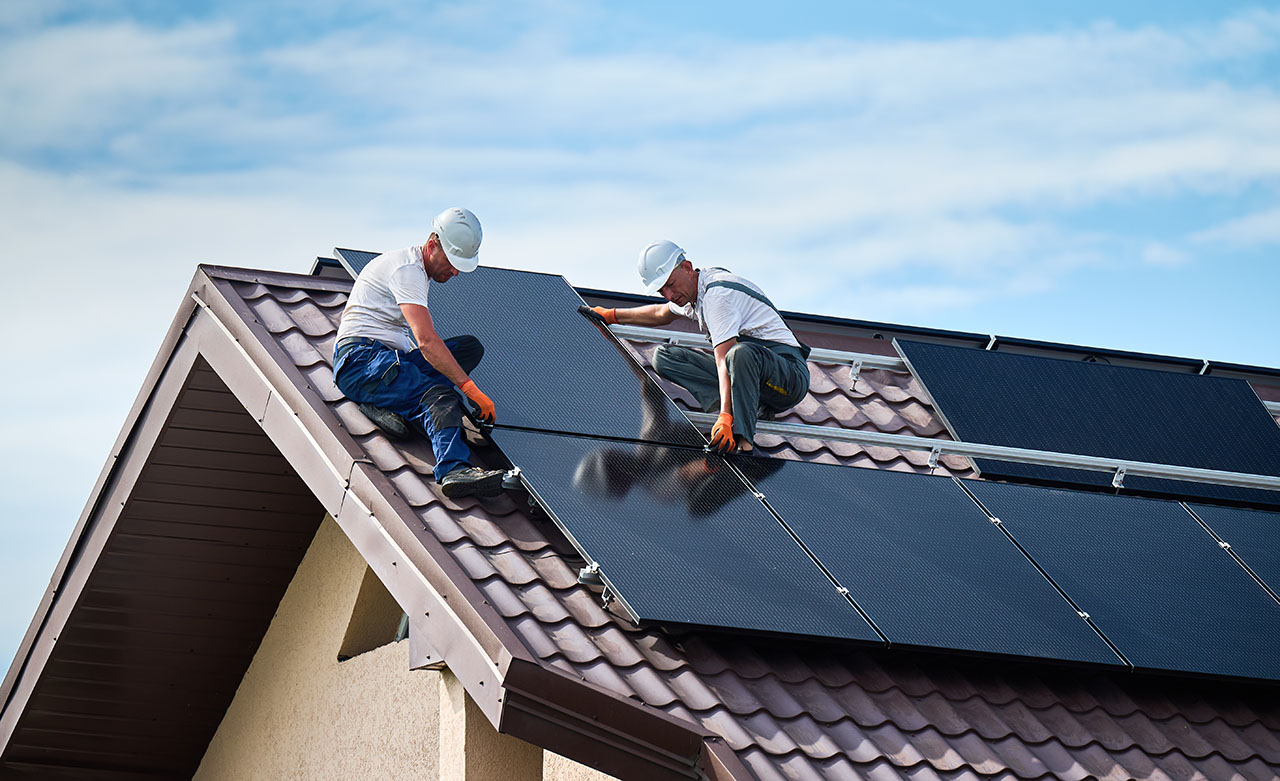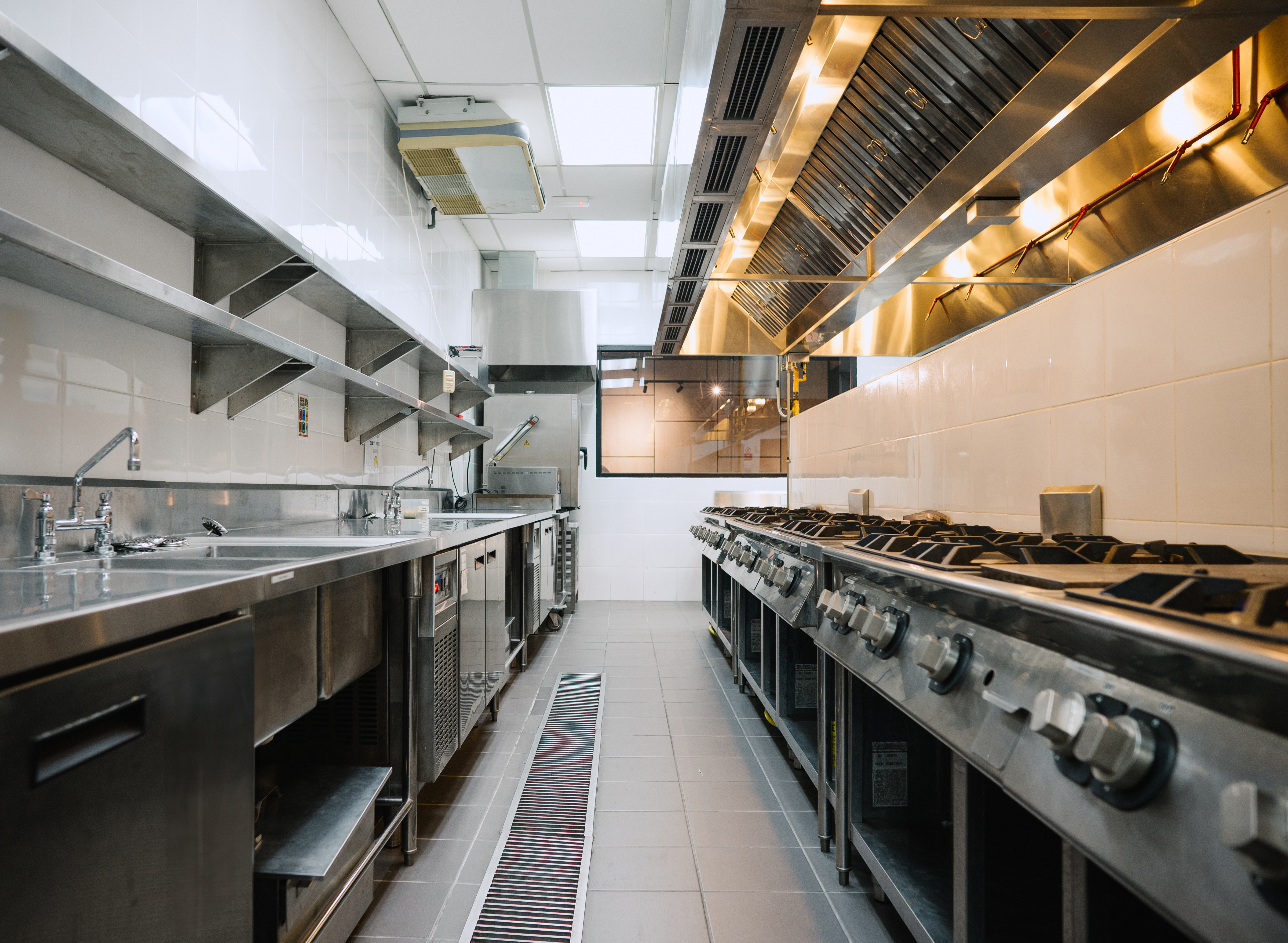
Numerous performance standards support the needs of food-prep professionals around the world in their demanding field.
By Regan Daley
Nov 04, 2024
A restaurant patron enters their favorite restaurant, catching a whiff of garlic that launches an internal debate over whether to order the scampi or the spaghetti Aglio e Olio. Approaching the front desk, the aromas created by the kitchen intensify, and the patron sends up a prayer to score a quiet corner booth to put away a four-course meal without judgment. Once seated, a server glides by with a decadent square of aromatic tiramisu – and the decision is made: caesar salad and garlic bread, followed by dessert.
While most diners focus on the atmosphere of the dining room as in this scenario, there is an ensemble of chefs creating masterpieces in a commercial kitchen tricked out with an orchestra of appliances. The chefs in the kitchen may have Michelin Stars and James Beard Awards, but the sous-chefs behind their success are ASTM International standards, and specifically, the work of the committee on food service equipment (F26).
Today’s food prep professionals demand appliances that consume minimum energy yet offer maximum performance and optimal energy efficiency. To meet these demands, ASTM has developed numerous related standards.
Good for the Environment and the Wallet
Energy efficiency, according to the U.S. Environmental Protection Agency (EPA), is “using less energy to get the same job done – and in the process, cutting energy bills and reducing pollution.” Conserving energy and using energy-efficient appliances reduces the levels of greenhouse gases that contribute to increased levels of carbon in the atmosphere. In 2022, the EPA reported that more than 6,300 million metric tons of carbon dioxide equivalent were released, with the residential and commercial sectors contributing 13% of this amount. As organizations and governments around the world place increased importance on reducing greenhouse gases, energy conservation and efficiency are of key importance.
FOR YOU: Safer Schools, Safer Children
Some of the largest consumers of energy in the commercial sector are restaurants, which use five to ten times more energy than other commercial buildings. According to Friendly Power, 43.9 kilowatt-hours (kWh) of electricity and 147.6 cubic feet of natural gas every year, per square foot, are consumed by restaurants on an average basis in the U.S. and Canada. Cooking, water and space heating, and refrigeration account for 75% of the energy used in a restaurant, with refrigeration using the most.
Using more energy-efficient products and ensuring high performance and energy output is not only good for the environment, it’s also good for the wallet. By switching to more energy-efficient appliances or ensuring that appliances function at optimal performance, restaurants can save roughly $5,300 in energy costs per year, according to Integrity Energy.
Working to Save Energy
In addition to standards and new test methods and designs, companies and organizations exist that aim to create more efficient products. Stephen Shaeffer of Hoshizaki America, Inc. and a member of the committee on food service equipment, says: “In a sense, we’re basically helping the end users with a more robust product that can save them a lot more.”

Standards can make the field of food service more energy efficient.
With the help of ASTM standards, appliances can achieve more consistent and enhanced performance with a more efficient output, while partnering with industry leaders can lead to further improvements. Energy Star is one such organization. A government-backed organization administered by the EPA, its mission is to “deliver cost-saving energy-efficiency solutions that protect the climate, improve air quality, and protect public health.” Shaeffer says that through their work and collaboration with other organizations, “We brought [consumption down probably about 25% to 40% to where it was back in 2005.”
Energy Star ratings are category-specific, and each requires a different minimum energy and water-performance level in order to achieve Energy Star certification. There are currently eight categories:
- Commercial hot food holding cabinets
- Solid and glass door refrigerators and freezers
- Fryers
- Steam cookers
- Ice machines
- Ovens (convection ovens, combination ovens, and rack ovens)
- Griddles
- Dishwashers
Standards in Practice
There are 86 active standards that aim to create reproducible test methods for appliances and help increase energy efficiency. Categorizing and evaluating the different types of food-service equipment and their performance is a key factor in reducing energy consumption, as well as increasing energy efficiency. Standards have prompted various organizations to introduce new products and initiatives.
“These incentives build consumer awareness of energy efficiency and create a driver for manufacturers to develop and promote more efficient equipment,” says David Zabrowski, vice president of Frontier Energy and chair of the subcommittee on productivity and energy
protocol (F26.06).
The committee on food service equipment has created terminologies, specifications, test methods, and performance requirements for food service equipment; covering equipment; cost and sustainability; productivity and energy protocol; and ventilation. Some of the most important and widely used standards in the food-service industry include:
1) Test method for performance of cook-and-hold ovens (F3051): This standard provides information on preheat energy and time, helping operators manage power use and gauge readiness, in addition to idle and pilot energy rates that estimate energy consumption during non-cooking periods.
2) Test method for performance of rack conveyor commercial dishwashing machines (F1920): The maximum energy input rate test verifies that the dishwasher is operating at the manufacturer’s specified input level before proceeding with additional testing. This test also helps identify any issues with the electric power supply, gas service pressure, or steam supply flow and pressure.
3) Test method for performance of double-sided griddles (F1605): This standard assesses the energy consumption and cooking performance of double-sided griddles so that food-service operators can choose a griddle based on their energy-efficiency and productivity needs.
4) Test method for performance of a pasta cooker (F1784): This standard evaluates the energy consumption and cooking performance of both floor-model and countertop pasta cookers.
Food-service operators can use this assessment to choose a pasta cooker and gain insights into its energy usage and production capacity.
5) Standard specification for heavy-duty ranges, gas and electric (F2521): Each range must be equipped with controls to adjust the temperature inside the oven and the heat of the cooktop burners. Additionally, the oven thermostat must undergo testing to ensure it meets the specified requirements.
These are just a few of many standards that have been developed, with standards for commercial coffee brewers (F2990); commercial steam cookers (F1484); and even prerinse spray valves (F2324) also being utilized in restaurants all over the world.
The next time you head to your favorite restaurant and tuck in to your favorite meal, know that standards have played a critical role in preparation – as well as in decreasing the carbon footprint of your evening. In the symphony that is the restaurant kitchen, the appliances help hit all the right notes—and make music for your taste buds.■
Regan Daley is a communications intern with ASTM International.
November / December 2024


